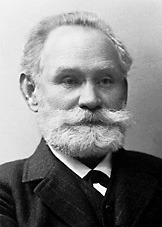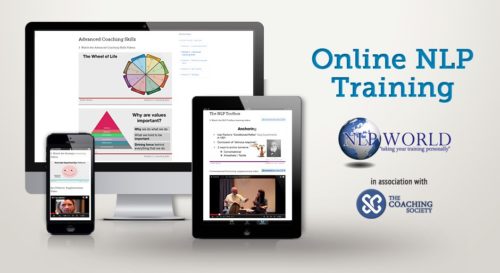How to Create Conversational Anchors
An alternative way to anchor a subject *without* touching them and so improving your rapport!
Terry shows how to pick up on the tiniest movements and “play them back” to fire off the subject’s state. Below is a more up to date session with conversational anchoring:

This example demonstrates a tactile anchor with conversational collapse anchor about 6 minutes in…

A Subtle Conversational Anchoring Example
This first part is basic anchoring theory.
What’s an Anchor?

What Pavlov did with his dogs, was that he rang a bell, and showed the dogs a steak. Rang the bell and showed them a steak. Then he rang the bell (without the steak), and the dogs salivated just as if they’d just seen a steak. Pavlov concluded the process of stimulus-response from this experiment. The bell was actually an anchor. What he had done is to set up an anchor for the dogs. An anchor occurs any time a person is in an intense state, and at the peak of that intense state or that experience a specific stimulus is consistently applied, the state and the specific stimulus become linked neurologically so that the state can be continually produced by setting off the stimulus.
There are Four Steps in Anchoring:
The first step is to put the person in state. You can use a spontaneous state, (asking the question “what’s it like when…” will be a present tense state) or an induced state (“Can you remember a time…”). It’s important that the state be fully associated. Which means that the person is in their body, being there as opposed to thinking they are there. It’s also important that the state be intense and congruent.
Here is some specific language to get the person in an intense and congruent state. “As you tell me about that thing you love, what’s it like being there?” “What do you really like/love about that?”
If that isn’t working for any reason you can use the following: “Can you recall a time when you were totally X’d? Can you remember a specific time? As you go back to that time, can you step into your body and see what you saw through your own eyes, hear what you heard, and feel the feelings that you felt when you were totally X’d?”
People go into states at different rates, so it’s important that you calibrate the state, or you can ask them to tell you when they are fully into the state, at the peak of the experience. You can have them nod, move their head, or finger, or foot or whatever. Remember, in rapport, you feel what they feel, so if you trust yourself enough, you already know!
Application of a Conversational or Tactile Anchor
The second step, when they’re at the peak, is to watch what they do with their bodies, eyes, breathing, hands etc. Also take note of the words they use and how they say them. This will be the unique stimulus to fire it off again.
Notice that as the state begins to peak, the person should outwardly be showing you how they represent that internal state. It’s almost as if they can’t hold it inside anymore and it has to come out to be seen. It’s at these points you’d consider the state to be at its peak and note all the behaviour because that’s what you’ll use later to fire it off again. When you have access to that state, anchor it. You can anchor by using their body language, voice tonality and words. What you may want to do, in order to get a very intense (positive) state when you’re working with someone, is to literally “stack” anchors. So you can use different occasions, contexts, events to get into several states and then you have a series of positive powerful states to use.
So you could use a context of love, confidence, power etc. and for each one say “What’s it like to be in that place?” “And what’s that like?” “What is it exactly that you love about that”. Anything that chunks then down and gets them really associated.
If this isn’t working, ask these questions…
a. “Can you recall a time when you were totally capable?”
b. “Can you recall a time when you were totally loved?”
c. “Can you recall a time when you were totally powerful?”
d. “Can you recall a time when you laughed hysterically?”
If you are doing tactile or kinaesthetic anchors, then they should start slightly before, and end right at the peak or slightly before. An anchor should be applied for from 5 to 15 seconds, so using a physiological (kinaesthetic) anchor you would hold the touch up to 15 seconds.
You can also anchor all the states by touching the person in the same place in exactly the same way.
The next step is to change the person’s state. Have them get out of the state they were in. Perhaps talk about something else. At least have them take a deep breath.
Set off the anchor by using the tone of voice, body language etc. Or if you are using tactile anchors, apply it (the anchor) in exactly the same way, and discover if they go back into state.
There are five keys to successful anchoring: ITURN can be easy to remember
- The first is the intensity of the response, or the congruity of the state. In anchoring, we’re looking for a fully associated intense state. You may ask, “Are you seeing yourself or are you in your own body?” We want them to be in their own body (associated).
- The second element is the timing of the anchor. The anchor should be applied just before the peak. If you hold it too long, then you may find that the person has gone beyond the first experience into a second, into another state, and the two states may be linked.
- The stimulus should also be unique. The uniqueness of the stimulus is important because if you set up an anchor on an area of the body (assuming a kinaesthetic anchor) that is touched a lot, such as a handshake, then the anchor will become weakened with time (diluted) because it will be set off by other people. So you will want to provide an anchor that is in a unique area of the body. Often an NLP professional will use an ear to set up an anchor or ask you to put a series of positive anchors in a fist.
(If you are using tactile anchors the next piece applies, if not then conversational anchors will be as good as you keep using the persons own version of the state). How long an anchor lasts depends specifically upon how unique the location is. If it's not an intense state that you're anchoring, or if you haven't stacked it, then the anchor will wear off or dilute itself more quickly. If the location is not unique it can be fired off so many times that it won't work again, because it won't be linked to the specific state.
- The next key is the replication of the stimulus. The way that you apply (if conversational anchoring, it’s how close you get to the persons unique way of representing their inner state), the anchor in setting it and in firing it off to test, need to be exactly the same every time. So if you’re snapping your fingers or giving them a certain look, you need to do it the same way every time. That anchor needs to be fed back to the person in exactly the same way it was set.
- Number of times: How many anchors you have discovered and are able to fire off. If it’s tactile anchoring, it would be the number of anchors you have established on a knuckle, for instance.
For conversational anchoring, remember, this is all you need:
- CONTEXT
- TRIGGER
- STATE
- BEHAVIOUR
Question to elicit the states ( + body language + eye patterns)
1st choice Q “what’s it like when you’re ………?”
2nd “Look if you were feeling confident right now, how would you be sitting in this chair?”
Look for gestures etc… Maybe get them to stand up!
3rd “Can you remember a time when…?” (Can be dissociated if use this way)
Then: THE MOVE
“That’s the way you’ve been, how do you want to be different?”
Look for them to access VR to VC with eye patterns and analogue markings
Steps for the collapse
- Present state, trigger etc
- Outcome state “how do you want to be different?”
- Then fish for pumped up outcome words feelings
- Attach resources to present state
- Condition the response (context, trigger, resource a few times in the same context they give you)
- Test: take them to trigger and let it run itself
- Future pace: go into future……..(no anchoring)
Accessing Positive States
Based on the information so far, we are ready now to discover how to put people into state. Actually, if you did the rapport exercise, you already know how to put people into state. The process of going into rapport with someone does indeed put them into a state with you. In fact, if you’re pacing and leading the person, just you going into a state will put them into that state. (Remember, a state is made up of an I/R and physiology.)
So the first step in putting people into state is to establish rapport. The second step is to put yourself into the state you want to establish in them.
The next step is to notice what ticks their boxes as you are talking to them. You already have the art of sensory awareness, so now you already know how to notice changes in their state. To get more into their states you also know the Meta Model, so you can use that to “chunk down” on good states! Just ask easy questions like, “what’s it like when you are doing what you love?”, or “What do you love to do?” Just watch them go into state and then ask questions like, “What’s that like?” (at this time you get into the state you want them to access).” For example, “What do you love to do?” They answer “Fishing”. You say “So what’s it like when you are fishing?” They say “Great!” So you say “What kind of great, what do you really love about being there?” Just keep digging for the gold and use your awareness to detect changes. When you see those changes, anchor it by using your own body and voice to feed it back. You know when you are being successful when they light up as you feed the words and body language back to them.
If you get really stuck you can ask it the old way we used to do by asking, “Can you remember a time when you were fishing, or if you were looking for a decisive time when they made a decision easily and quickly, “when you were totally decisive?”.. ).” Or, “can you recall a time when you purchased something that you were very happy with?.. (for buying state).”
What will happen is that people will literally go inside and do a search of their memory to discover that particular time. If you have them do enough of that (such as happy buying state), they will connect (or link) you to that state.
The question may come up, what if they’re resistant, or ask you, “Why are you asking me this stuff?” I had that happen once when I was signing up a new client. And I was asking him to recall all sorts of outrageous stuff. He said, “I can’t believe I’m sitting here answering all your crazy questions!” I said, “I know! I can’t believe it either! Why are you doing that?” He answered, “You know, I just feel like I’m very close to you.” Bandler and Grinder say, “There are no resistant patients, only resistant therapists.” So before you ask outrageous questions, establish rapport. Then you can do anything, and they’ll forgive you.
One more thing you can do in advance is to set the frame about what you’re going to do. Here are some nice frames to put around the process of putting someone into state:
“As we sit here talking about your business, I’m beginning to wonder if it would be appropriate to ask you now, what you love about your business…”
“That reminds me, can you remember what it’s like to be totally decisive, now…”
“You know, I was wondering, what’s it like when you’re making a business decision that’s a big win for you, and making you lots of money?”
And you know what? They’ll love the time with you… and so will you!
Anchoring, Kinaesthetic Version
So, when you have access to a state, the next step is to anchor it. And remember that a spontaneous state is usually more powerful than one that is induced. Whenever you find a state that you can use (whether it’s in you or someone else), you can anchor it.
Related Content
For a deeper understanding of this subject, we recommend having a look at:
- Our NLP Glossary for the term “Anchoring“.
- Our Online NLP Practitioner Course in our NLP World Shop.
Law Of Attraction Videos
NLP World Products
-
Online Courses
Online NLP Practitioner Training
£449.00Original price was: £449.00.£149.00Current price is: £149.00. Add to basket


